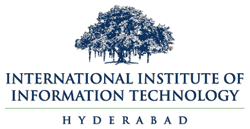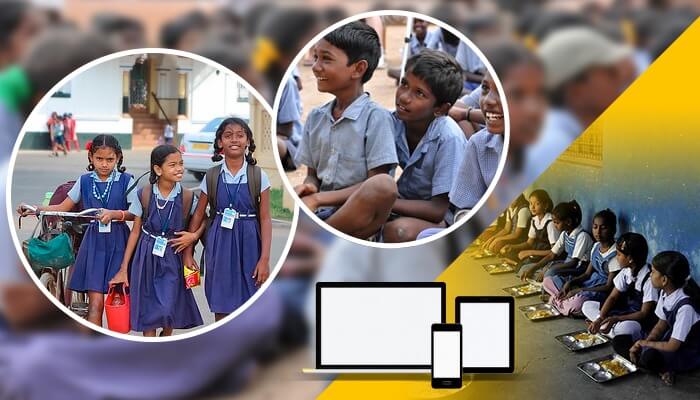A roundtable meeting on ‘AI & Emerging Tech for Grassroots school education post-pandemic’ was recently organised by International Institute of Information Technology Hyderabad (IIITH) to uncover and deliberate on challenges faced by children in rural government schools.
When the ICMR chief Dr. Balram Bhargava recently suggested the reopening of primary schools first followed by secondary schools, “once India starts considering (it)”, he was not only referring to childrens’ ability to handle viral infections better than adults, but his statement was also in response to parents’ concerns about the loss of yet another academic year. It was a similar concern that saw a brainstorming session by a large group of stakeholders from policy makers, grassroot educators, government agencies, NGOs, researchers, technologists, rural startups, social scientists, and CSR groups of corporate entities. The roundtable was organized by Prof. Raja Reddy Center at IIITH to understand how the pandemic has affected the level of learning especially in rural areas, and to identify probable solutions. The center’s emphasis is on driving education and innovation in healthcare, particularly in rural settings. While several NGOs have been actively involved on the ground, the lack of access to research technology is affecting their scale and impact. The center hopes to liaison with these organizations and intensify their efforts by providing them access to emerging technologies like AI and ML. The panel’s discussion broadly covered the typical problems faced by rural government schools, ways in which students could be safely brought back to classrooms post-pandemic and how emerging technologies could be improvised to help in such settings.
Challenges Of Virtual Education
That there exists a rural-urban divide in India is beyond debate. The disparity is not only economic as evidenced by occupational choices, wages and consumption, but also in terms of access to education and its attainment. With the shift in education to an online medium due to the coronavirus, the disparities seem to be magnified.
Digital Literacy Gap
The absence of internet connectivity and lack of devices such as smartphones, laptops or tablets has been one of the most pressing challenges facing rural schools. Where internet is available, its astronomical expenses make it a luxury that rural households can ill afford. Besides, there are major connectivity issues that make concentration in online learning extremely difficult and lessons uninteresting. Experts opine that in cases where tech gadgets are distributed amongst students, there lies a catch-22 situation: they are often unaware of how to use them. And where students are well versed with their usability, they are prone to the negative effects of unrestricted browsing. It’s important to highlight that it’s not only students who are facing difficulties with the transition to the virtual medium, but also the rural teachers are finding themselves on unfamiliar ground too. A lack of awareness is causing anxiety, helplessness and sense of disinvestment in the process, which in turn is being rubbed off onto the children. The teachers hence require training on handling technology and need to be upskilled.
Absence of Peer Groups
With a complete halt in physical interactions with peers, children are feeling isolated online and unable to share their ideas, thoughts and emotions with anyone. Community or peer learning which is one of the most effective ways of educating students regardless of age has been severely compromised.
Arts In Education
The panelists underscored the need for revival of arts in education which is currently missing. It is arts that help students grow in confidence and enable them to think positively. Currently, the economic fallout of the pandemic is forcing children, especially girls, into labour leading to depression.
Large Scale Dropouts
Due to lack of access to relevant learning resources, combined with traditional and rigid teaching methods, and the usage of the non-native English language as medium of instruction, rural students are preferring to learn practical life skills by accompanying their parents to eke out a living. The literacy gap is widening with students dropping out of schools.
Ensuring Safe Return Amidst School Reopening
A number of suggestions were put forth by the speakers on ensuring that rural students return to physical classrooms with the easing of restrictions due to the pandemic. One of them spoke about the revival of the successful mid-day meal scheme which has proven to attract children to school in the past too. A partial reopening with the promise of healthy meals is likely to get students accustomed again to school life. Besides a partial reopening after an extended period is likely to be welcomed by students who face a non-conducive family atmosphere with a myriad of vulnerabilities.

Peer Learning
Since physical interaction with peers is likely to be the most looked forward-to activity, educators must work towards formalising peer learning to motivate the students to return to school. In addition to this, the creation of extended online spaces that facilitate peer-to-peer learning and that can be leveraged from any regional area is the need of the hour.
Sensitising Teachers
Rural teachers ought to be sensitised to the mind states of the children and provide adequate support when they return to school. Apart from the loss in school years, a large number of children have had to face loss of family members, and loss of their childhood in terms of having to work for a living – all of which has taken a toll on their mental well-being.
Bridge Course
Before plunging headlong into imparting new learning when school reopens, an attempt should be made to introduce a bridge course to help students retain and refresh prior concepts. Keeping students’ absence from formal education in mind, the curriculum should be reduced in size with the introduction of only relevant topics.
Tech To Assist
Despite annual assessments that are undertaken for every grade as a measure of student progress, monitoring and tracking their progress on the ground comes with its share of challenges. The presence of AI in this space would help make this process both teacher and student-friendly. For instance, having a common platform or a dashboard which teachers and students alike can access to track, self-monitor and improvise their learning and teaching experience.
Assessing Qualitative Skills
While assessment tools help in quantifying student performance, the presence of technology helps in building a system that can also quantify qualitative performance and skills such as creative thinking and problem solving. Again, the tool ought to be customised as well as simplified enough to be easily accessed and understood by both rural teachers and students.
Experiential + Personalised Learning
A hybrid model of learning with equal emphasis on synchronous as well as asynchronous education is possible through the intervention of AI. The ability to learn at one’s own pace, at preferred times anywhere, via the most preferred way of learning will help in motivating and engaging with learners. Thanks to virtual technology and self-paced online learning content, it is now possible to create contextualised content for learners by making it experiential for them. Think independent practical experiments that can be performed online. Traditional education does not differentiate between strengths and weaknesses of children with varying learning needs. With AI though, it is possible to customize curriculum and design pedagogy in such a way as to align it with the academic standards of each child.
Digital Interaction And Gamifying Learning
With physical interaction severely restricted, an online system of peer interaction such as a ‘digital buddy’ can be created which allows students to chat, play, learn, and share in real time. Learning via games has always been a preferred way of motivating students and engaging with them. And it is no different in the online setup. Any learning that is gamified has more potential in sustaining student interest through the process of awarding points, badges, and other related visible progress markers.
Train The Teacher
All of the above mentioned ways in which AI can assist in education are only possible with the empowerment of the teachers. With the teacher being the primary stakeholder in the rural education process, equipping them adequately via digital literacy will be extremely beneficial. For this, a teacher training intervention model should be put in place for easy access and usage of all concerned educators.
Having taken note of all the problems that currently face online education in the rural areas, the Prof. Raj Reddy Centre will take up efforts in the following areas: upskilling teachers to better handle virtual mode of instruction, creation of new-age tools to supplement teaching, personalising the online experience for both teachers and students through “online buddy” system, using AR/VR and mobile solutions to build creative pedagogical solutions, building cognitive and behavioural tools for better targeted interventions and so on. The endeavour will be to develop standards, create reusable frameworks and platforms in order to facilitate a wider impact in the coming years.
Commenting on this initiative, Prof P J Narayanan, Director of IIITH said, “The vision for Prof Raj Reddy Center is to bring the latest research to build solutions that grassroot social organisations can adapt to help the underserved sections, particularly in education. This round table is a step in the direction of discovering the needs.”
Invited Panelists
While the panel was chaired by Viiveck Varma, Advisor to Prof. Raj Reddy Center, the thought provoking discussions were contributed by Naveen Mittal, Commissioner, Collegiate Education & Technical Education at Government of Telangana; Sridhar P, Founding Director, Kautilya School of Public Policy; Ramji Raghavan, Founder, Agastya International Foundation; Vinoda Kailas – Director, Pravaha Foundation; Samyak Chakraborty – Founder, Xbillion Vision Labs; Abhimanyu Saxena – Founder, Scaler Academy; A N Ramachandra – Ex Commissioner, Navodaya Vidyalaya; Brig. Ganesham – Founder, Palle Srujana; Pothu Raju – Head Master, Guntur; Prof. Jayanthi – IIIT, Hyderabad; Kiranmai Pendyala – Head of HR, Western Digital; Pradeep Lokhande – Founder, Rural Relations; Mayur Patnala – Founder, Nirmaan; Payoshni Saraf – Director Alumni Impact, TFI; and Ashish Shrivastava – Founder, Shiksharth.

